6002 words
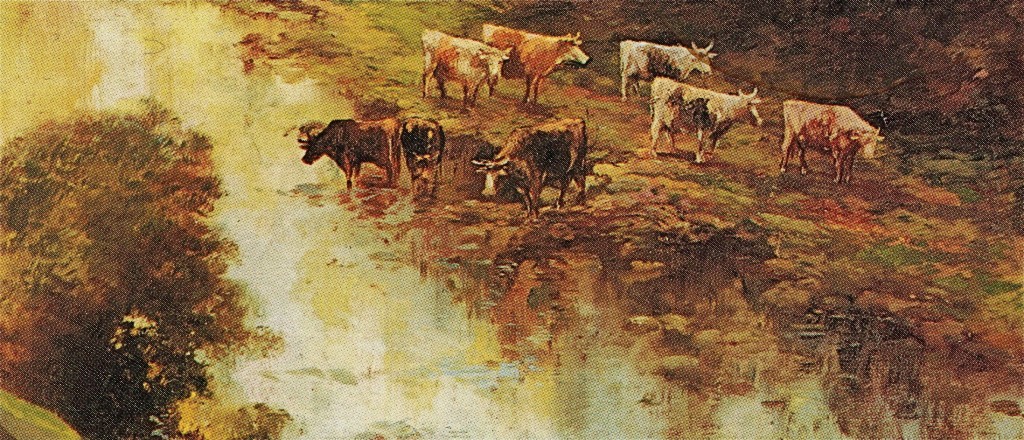
Virginia’s Demise in 1861 was not an unscheduled comet, landing on the unsuspecting. . .
But George Koonce of Harper’s Ferry did not yet know that the challenge of getting grudging, growling Jefferson County into the new West Virginia would land squarely on him. When this rending finally came in 1863, Jefferson County – perhaps more than anywhere else – was pulled along the tear – becoming the West Virginia County that least wanted to be in West Virginia.
A SUMMARY OF THE PROBLEM
ALWAYS A BAD PAIRING: 1720-1861
The freedom-driven German Lutherans, Scotch-Irish dissenters and Presbyterians west of the Blue Ridge would eventually “break” from east Virginia because eastern Virginia landowners tied all voting power to their own vast “property” holdings. Much of that property was owned people, adding a dimension of immorality to the unfair voting law. Also were strains caused by state-funding to schools almost entirely in eastern Virginia and a highly-leveraged railroad that served eastern and southern Virginia only. Routinely referring to the western Virginians as “peasants” whose honest labor eastern Virginians haughtily assessed as much less valuable, dollar-for-dollar, as the forced labor of an owned, healthy African man – verged on being duel-worthy.
Giant increases in western settlement of arrivals from the British Isles in the first three decades of the 19th century and the completion in 1853 of the Baltimore and Ohio Railroad to Wheeling both empowered, emboldened and increasingly “northernized” western Virginians. Both factors were hastening the end of oppression by east Virginia’s large property-holding class. So, the bonfire of Separation was set and long-awaiting before the Secession Convention of April, 1861 and the fiercely bullying tactics of the eastern Virginians gave it a blazing match.
WHITHER JEFFERSON COUNTY?
Jefferson County had one ideological foot in each region and tended to suffer doubly, as both the viewpoints of east and west Virginia were advanced by its own diverse populace. Jefferson County was prized by both regions for being the top wheat-producing county anywhere in Virginia and, by 1842, was traversed by a vital stretch of the 178-mile B&O that carried the mails fast and would offer the first telegraph line in its miles of rights-of-way. Whose side Jefferson County was on in this slow-motion, divorce proceeding mattered.
THE SLOW-MOTION DIVORCE UP TO DECEMBER, 1860

The chasm between eastern and western Virginia was as old as the real chasms. The first settlers entering Virginia west of the Blue Ridge, were seen by Virginia’s powers as nothing more than an encouraged protective barrier against marauding Shawnees.
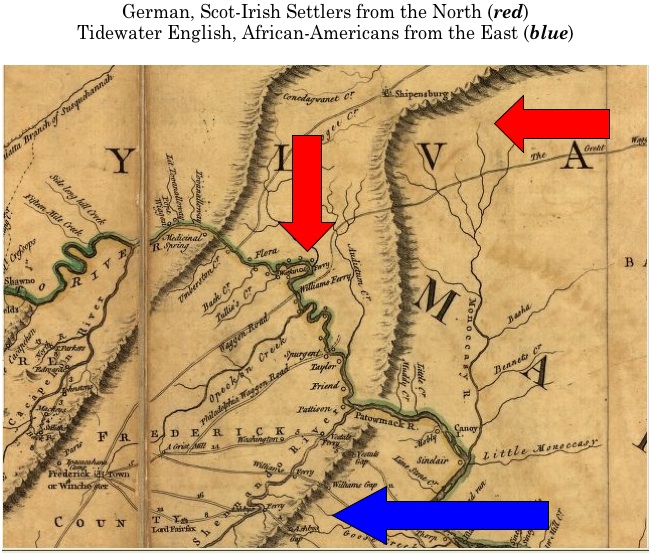
Governor William Gooch encouraged settlement west of the Blue Ridge to thwart Shawnee attacks.

The date of the arrival of these German pioneers of the Valley has been variously put. There is nothing of record, so far as is known, by which the exact time may be ascertained, but it is evident that they were here some time before 1730, as early as 1725 has been surmised, but 1727, or thereabout, is more likely to have been the date. That they came before 1729 is pretty surely known, for in that year a number of grants were issued by Gov. Gooch, and had the settlers come in after these grants were issued, they would, doubtless, have gone a little farther along, where land was apparently free. . . (Norris, pp. 320-321).
DIFFERENCES LAID BARE EARLY
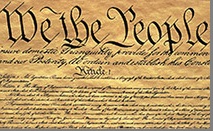
June 25, 1788 – Wednesday, Richmond, VA.:
Virginia’s Ratifying Convention of the U.S. Constitution

At Virginia’s Ratifying Convention of the U.S. Constitution in June, 1788 at Richmond, Patrick Henry fiercely attacked the Constitution for days. Adam Stephen, founder of Martinsburg, once a major general in the Continental Army and George Washington’s executive officer for some twenty years before that, rose on June 23rd and said:
Henry means to frighten us by his bugbears of hobgoblins, his sale of lands to pay taxes, Indian purchases, and other horrors that I think I know as much about as he does . . . if the gentleman does not like this government let him go and live among the Indians. I know of several nations that live happily and I can furnish him a vocabulary of their language.
The final vote on June 25, 1788 to ratify the United States’ Constitution was 89-79, with the western counties led by Stephen voting 15-1 for ratification, saving the new nation.
1822 – FIRST RUMBLINGS OF SEPARATION
After the Virginia Assembly evaded addressing a formal petition for redress by western Counties for about thirteen years, a constitutional convention was convened on October 5, 1829 and carried on until January 15, 1830. Eighteen of the ninety-six members were from today’s West Virginia.
Focus was above all on suffrage. The population was growing much faster to the west than the east, so the eastern interests held even more tightly to their prerogative of basing voting power on population AND the extent of one’s held property. If the best, but owned, African-American laborer was assessed in his value at $1200 – the value of over thirty acres of arable land in Jefferson County at that time – the tax on the owned person was much less than that on the thirty acres of land.
. . . To the statement that nearly three-fourths of the tax had been paid by the counties east of the Blue Ridge, the West asked who were the men who had fought the battles. . . The convention finally agreed to lessen the requirements of a free-hold, and to extend the suffrage to leaseholders and housekeepers who paid taxes.
When submitted to the people in April, 1830, and ratified by a vote of 26,055 to 15,563, the vote within the bounds of West Virginia was only 1,383 for ratification and 8,365 against it. Almost all the northwestern counties except Monongalia and Preston were practically unanimous in opposition. (Callahan, pp. 321-324).
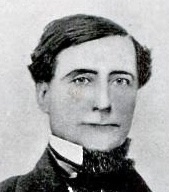
Hierome L. Opie and Thomas Griggs – both large property and people-owners – represented Jefferson County and sided with the eastern interests. Hampshire and Jefferson were the only two West Virginia counties which gave a majority for the minor revisions and concessions to western Virginia. The separation pot would keep boiling – but more.

Benjamin Watkins-Leigh described the white people west of the mountains as peasantry. He added: What real share, so far as mind is concerned could the peasantry of the West be supposed to take in the affairs of the State? (Hall, p. 36).
Wrote Historian Granville D. Hall in 1902:
At this distance of time it seems startling to recognize the irrepressible conflict between the two sections as it showed itself in openly expressed fear of division and the free handling of the question of disruption so long ago. The wonder arises that with such discordant elements, such outspoken discontent and hostility to an existing order of things within its borders, it was possible for the Old Dominion to hold the West under its domination so long, before the crisis arrived which settled the question of division at once and forever.
JEFFERSON COUNTY’S “OLD VIRGINIANS” RE-ASSERT AGAINST NEW WAYS, NEW-COMERS
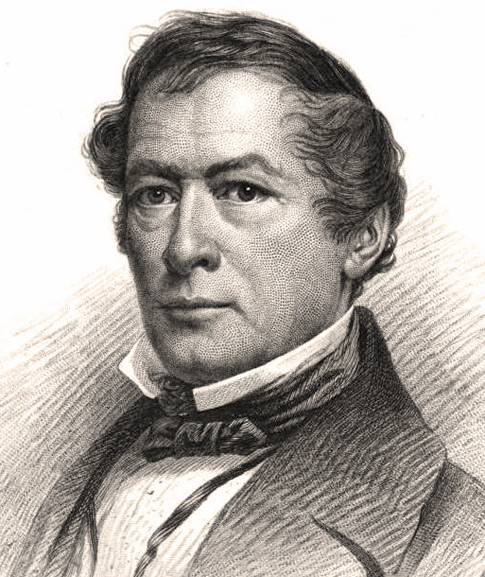
John Pendleton Kennedy, a Baltimorean with vast family roots in Jefferson County from his relatives, the Pendletons, and author of the greatly influential book in 1831, “Swallow Barn,” based on “The Bower” in Jefferson County – complained in 1828 of these unpleasant newcomers, suggesting the Scotch-Irish:

One thing I should like your father to see in this country – you know his prejudice (I think I may call it one) against Virginia, for its loose manners and thriftless mode of life – I should like him to travel through this upper region at least to see how completely the elegancies of society and the best points of a luxurious mode of living, have been invaded by a sort of stiff, awkward, and churchly morality, that seems to have attacked every seal of grace in gesture, speech, ‘affections of delight’ (as Shakespeare calls them) with everything that made Old Virginia once the seat of noblemen, but not of penny-saving presbyterians. (Bohner, p. 76)
Ambrose Ranson, who grew up on a family farm near Charles Town, captured in word that “luxurious mode of living” having imbibed lengthily on the elixir of enslavement’s unjust rewards to the people-owner. He describes life as it was (NOTE: The editor has included Ranson’s long description to allow for nuance and to show the seductive nature of the slavery-dependent lifestyle.):

The most remarkable feature of the situation in our section was that refinement and even elegance could exist on such very small means. A man with a small farm, say 300 acres worth about $12,000 and a few slaves, was really a prince – a prince of the kind that no millionaire of the present can even emulate. His butler, his coachmen, his cook were all his property. They could not strike for higher wages. They could not give notice of leaving. They were there and there to stay. Knowing this, the head of the house was free from some of the carking cares, which beset the most favored people of the present age (1913-ED).
He had leisure to think, to read, to cultivate his mind and manners and to indulge himself in social pleasure. He was a better-educated man, a better-read man in current and ancient literature, and he was a better-mannered man than the man of the present age. Freed from little worries, his temper was better, his heart was softer, and his disposition more sunny and genial. Social intercourse, therefore, was on a plane which is now unknown. There was little attempt at grandeur or extravagant display, a beautiful simplicity pervaded life and gave it its greatest charm. Of course there were degrees of wealth; the man with thousands of acres and hundreds of slaves, the man with a few hundred acres and a few slaves, but the latter was all the same a prince and was so recognized by the former. The man with the smaller fortune was just as independent as the other, and in some respects was in a rather more favored position. His fares were fewer certainly and his time was more his own, while his social position was as good as anybody’s. He was received in all social functions, his financial status not being considered in the least.
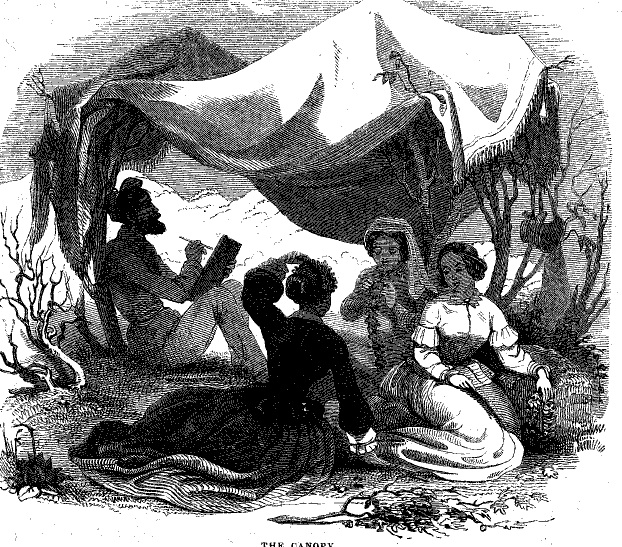
His intellectual and educational advantages were of great importance and his manners also. As a consequence, he was careful to cultivate these, and was generally entertaining and agreeable. It is well-known that the Man I am describing was well-posted in political and other matters of his own and antecedent epochs. I have known men of this stamp who knew well their Homer and their Thucydides, their Bacon and their Shakespeare and were ready and apt in quotations, and at the same time were not lifted above current events, but rather forgave them the preference in conversation, using their knowledge of the past in illustration of events of the present day. A friend of mine told me of a dinner in New York the other day at which twenty-five hundred millions of dollars were present. He told me nothing of the people, what they said or what they did. He only told me in bated breath of their money. Such a dinner in olden times was of course unknown and in comparing them, words cannot express my preferences for the old. I can remember some of those dinners when the ladies had retired, and the decanters of old Madeira went circling round over the polished mahogany, and am filled with regret that those days have passed away forever.

People-owning was a tough habit to break. For a laborer to escape to freedom was the occasion for as much consternation as seeing 20-40 acres of good farmland absconding on running feet.
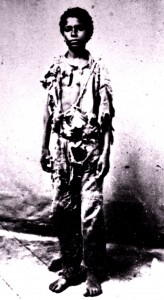
(NOTE: The young boy is wearing ragged clothes that were common. He would be sold for perhaps $500 in the 1850s in Jefferson County.-ED)
RAILROAD PLANS SET THE COURSE TO WAR 1831-1861
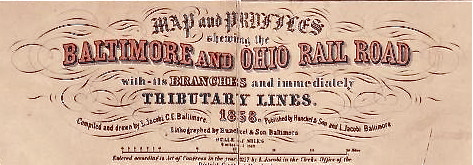

Railroads forecast the future. Virginia’s Assembly committed its and others’ money to lay a line serving east-west the southern portion of the state. So long as the B&O’s projects inside Virginia stayed far to the north from their planned Virginia Central line, the Virginia Assembly allowed the laying of B&O line across the girth of Jefferson County, to Martinsburg and a massive depot, and further west for many more miles inside Virginia’s borders.
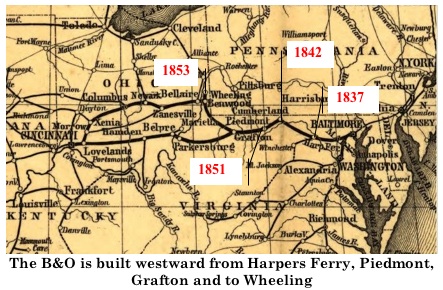

But eastern Virginia would watch aghast as Jefferson County and the northwestern counties plunged permanently into the powerful orbit of the commercial colossus of the Baltimore and Ohio, as it pressed its muscular reach west, with 4500 busy workers, offering the fastest mail delivery – a letter could go 200 miles in less than six hours – while exploiting its own unlimited free use the telegraph line it hired Samuel F. B. Morse to make happen in the B&O rights-of-way. Meantime, the Virginia Central faced the challenge of Blue Ridge Mountains – and foundered.
Inexorably, by 1834 the B&O’s massive rail crews reached Harpers Ferry from Baltimore. More time was needed to tie the B&O into the Winchester & Potomac at Harpers Ferry. Relentlessly work crews of 1500 men and 450 horses then lay iron rails, shipped from England and weighing 51 pounds a yard onto wooden ties mounted in a foot-deep bed of crushed limestone, marching across Jefferson County to Martinsburg.
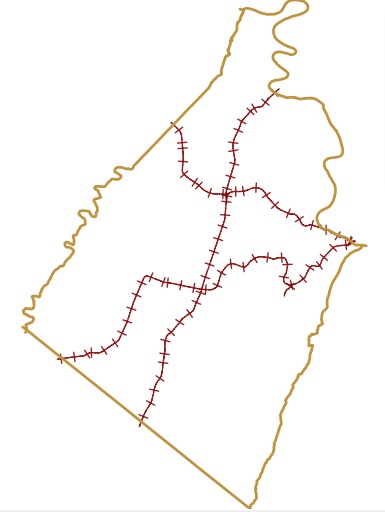
By connecting to the Winchester-Potomac line that ran to Winchester, opening up the lower Shenandoah Valley to produce transport, farmers here and Winchester’s region could ship their farm goods – as the state’s breadbasket – to markets that were north, not south.
Continuing west, the B&O line in November, 1842 re-crossed out of Virginia to connect with the Old National Road in Maryland. In a concession to the Virginia legislators, the B&O management brought the line back into Virginia at Corinth and continued the rest of the way to Wheeling, Virginia.
Much of the B&O track between Wheeling and Baltimore, which opened in January, 1853, ran through northwestern Virginia. By the time the B&O was shipping nearly half a million tons a year east on the line – Jefferson County and its western neighbors were well within the B&O commercial force field. Cries emitted from Richmond, led by governor (1856-1860) Henry A. Wise that the railroad was “abolitionizing” Jefferson County.
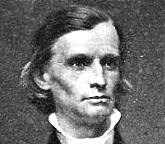
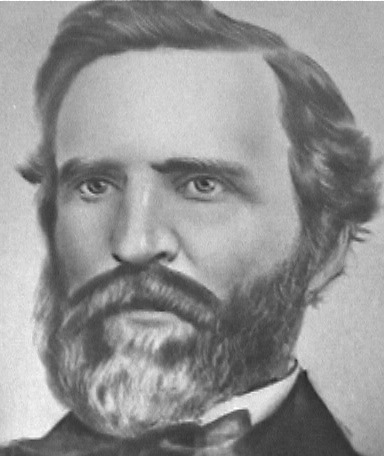
A train may have enticed an Ohio-born, ethnic German Lutheran from Steubenville to Harpers Ferry. George Koonce was just one of those stalwart principled voices with a northern ring that disquieted some native Virginians.
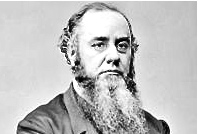
Much fate would devolve into the hands of George Koonce’s childhood buddy, Edwin Stanton, who, in adulthood, became an ardent B&O advocate and later – Secretary of War in Lincoln’s cabinet.
Stanton would wish to have George Koonce become the hinge in the madly swinging door of West Virginia’s – and Jefferson County’s – destiny.
GEORGE KOONCE’s GREAT GRANDSON, STAFFORD KOONCE
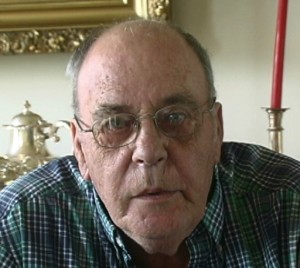
I’m Stafford Koonce, great grandson of George Koonce. George was born April 17, 1818. He was born in Steubenville, Ohio. He died July 23rd, 1908 at his home – Ellersie – at the age of ninety. He grew up with a young man named Edwin M. Stanton, and, later in life, Stanton was named Secretary of War by Lincoln. And when the division of Virginia arose to form West Virginia, Stanton asked George to attend the meetings in Wheeling. He represented Jefferson County at the convention. He was elected to the West Virginia state legislature in 1865, 1866, 1867 and to the State Senate in 1870 and 1871. At the time when he went to Wheeling, the residents of Jefferson County weren’t too pleased and, more or less, had a hard time in the County. (He would go to Washington to stay with his son “Charlie”). He was also Sheriff of Jefferson County. He was Constable of Bolivar and Harpers Ferry in the 1830s, and he was also, to my understanding, U. S. Marshal. He had thirteen children and two marriages. (In) his first marriage – his wife passed away (Emily Piles Koonce) – he had six children. (In his) second marriage with my grand-mother – Bettie (Ellen Brittain)
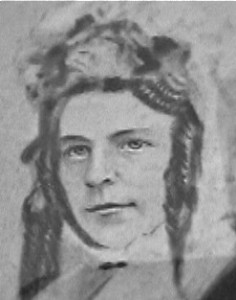
Koonce – he had seven children. His son, Harry Stafford Koonce, is my grandfather. She was born January 6, 1837 and died April 6, 1920.
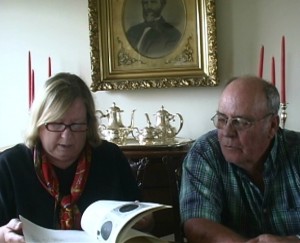
MARY KOONCE (Mrs. Stafford Koonce): My name is Mary Koonce. He (Stafford) has been very lucky because his aunt collected a lot of material and pictures and gifted the family and the libraries in the area with “The History of the Koonces, Brittains, the Allstadts, and Henkles.” One night when I couldn’t sleep I was surfing the Internet and I came across a listing for George Koonce in the Duke University Archives. I read two papers. And one said George Koonce actually rallied a militia when John Brown attacked Harper’s Ferry. The other paper said at one time that he had to leave the area – because he was a Union sympathizer – when the Confederates held Harper’s Ferry. He went to Washington. He believed in public service. He was known to be very straight-forward. When he gave you his word, he gave you his word – he didn’t falter or go back on his word. People really knew where they stood with him.
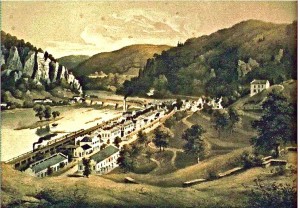
George Koonce was a leader in the militia called Floyd’s Guards serving Harper’s Ferry. When John Brown’s group attacked Harper’s Ferry, Koonce appears to have been part of this operation:
The Harper’s Ferry Guards divided into four squads; one crossed the Potomac and came down the Maryland side, and seized the bridge. That was where the Abolitionists’ re-enforcements were looked for. Another squad took possession of the Shenandoah Rifle Works, and a third guarded the railroad bridge above the Musket Factory. Captain Avis, Lieutenant Chambers, Richard Washington (brother of Colonel Lewis, the captive), William Copeland, John Stahl, Jr., Jacob Bajent, George Coleman, Sr., Ed. McCabe, Mr. Sweeny, Thomas Bird, Mr. Watson, and four others were in the last squad, that headed straight for the Arsenal. SOURCE: Chambers, Jennie. (January, 1902). “What a School-Girl saw of John Brown’s Raid.” Harper’s New Monthly Magazine, Vol. 104.
“The Virginia Free Press” published on Thursday January 3, 1861, a statement with the headline: “Union Meeting, Bolivar December 15, 1860.”
The meeting’s organizers, including Koonce, were mostly men who weren’t native to Virginia and had come from the northern states. Of the two who were born in Virginia among the leaders, both had had jobs at the federal armory. According to the 1860 Census, the leaders and their place of origin were:
Thomas Russell: an England-born, 41-year-old armorer;
Koonce George: a 42-year-old from Ohio;
George Angure: a 36-year-old machinist from Connecticut;
Franklin Manzy: a 27-year-old born in Va. an armorer;
Thomas W. Green: a 39-year-old armorer born in Maryland;
Philip Engle: a 49-year old armorer born in Virginia;
The report in the “Free Press” began:
Pursuant to the call made by some of the prominent Union residents of Harpers Ferry and Bolivar, the citizens thereof convened in the Bolivar School House for the purpose of obtaining some public sentiment on the subject of the impending public crisis.
The meeting was one of comparative interest characterized by an observance of marked order and respectfully attended irrespective of party or party proclivities. Thomas Russell was called to the chair and J. W. Gannon appointed secretary.
On motion the following named gentlemen were appointed a commission to draft and report Resolution to whit:
George Koonce, Frank Manzy, Phillip Engle, and George Angure, Thomas W. Green
Motion made by E. H. Chambers and carried: That an immediate call be made upon all the citizens who on bent, principle, and practice love the Constitution and the Union and abhor the false tongue and sacrilegious hand that would attempt its destruction, to meet at the Ferry on Monday morning the 17th at 8 o’clock, accompanied by Fife and Drum. – there join in procession and march to Charles Town in Old Continental Style.
Committee returned:
Whereas, in view of the indicative signs of the times, we deeply deplore the confused and agitated condition of our once happy and God-blessed heritage, truly an evil day has overtaken us, pregnant with the breeding of evil events.
The clock of aggression and depredation has arisen with its sad forebodings in the North, while the storm of revenge and secession equally alarming has arisen in the South, both of which are the legitimate and spontaneous results flowing from the absolute want of that feeling of sincere brotherhood and regard of mutual interests; that should ever abound in the bosum of one state towards another, as members of the great national family. And while we rebuke one we condemn the other.
Although many true causes are alleged by “secessionists” in vindication of the rights of severing the Union asunder, whose component parts were cemented by the blood of the revolutionary fathers; thus ruin and wreck the mightiest temple of strength and national prosperity known in the records of the earth yet we recognize none nor all as sufficient provocation for the committal of so rash an act; much less to be an infallible cure of existing troubles, or a permanent guarantee against the perpetuation of similar grievances. We declare that our first and most urgent desire is to preserve and to perpetuate the Union which was formed by the fathers and which we would transmit to our posterity unborn, with all its resplendent glory and endearments, even at the sacrifice of our lives.

No where have Northern hostilities been felt more bitterly than here. If any community has been aggrieved – if any people can claim a peculiar right to speak – we the citizens of Harpers Ferry might justly demand a hearing.
We concede to no people or section of this wide spreading empire a more just call for secession or redress than the citizens of this town. We have been made the target of wild northern fanaticism. The peace and quiet of our homes and our firesides have been invaded by an abolition banditti of merciless outlaws. Our roads and soil have been marked by the unhallowed footsteps of the Northern knave. We have seen their Pike and heard the keen crack of the Northerners’ rifle. . .
The article concluded with the following:
1st: Resolved that the Federal organization is not a voluntary organization of states, subject to dissolution at the discretion of any member – that it is a compact founded upon the principles of good faith between the states of mutual and permanent obligation, and therefore the right of any state to secede is an usurpation of power and wholly unwarranted by the letter and spirit of the Constitution.
2nd: Resolved that the imminent danger of the Union’s dissolution – the cause of the present portentous crisis – is the actual and threatened interference on the part of the North with the rights and prosperity of the people of the South.
3rd: Resolved that the mutual and common interests of the several states renders it the imperative duty of the Federal government to enforce in good faith and with temperate fairness the laws enacted in pursuance of its authority, in all cases where their infringement would impair the constitutional rights of any state or the common and reciprocal rights and the several states.
4th: That should Virginia’s legislature deem it expedient to call a State Convention or propose a conference with the Border States for the purpose of meeting the issues forced upon us that we yield over hearty acquiescence, provided that the final decision of such convention when arrived at shall be submitted to a vote of the people for their approval and rejection.
NEXT: 2 Virginias – The Awaited Comet – Pt. 2: January, 1861 to statehood – then Jefferson County rebels again.

References:
Bohner, Charles H. “John Pendleton Kennedy: Gentleman from Baltimore.” Baltimore, MD: The Johns Hopkins University Press. Print
Brockner, William L. (2005). “The Correspondence of Bettie Brittian Koonce, September 1862.” Magazine of the Jefferson County Historical Society. Vol. LXXI.pp. 85-94. Print.
Callahan, James Morton. (1923). “History of West Virginia, old and new.”
Vol. 1. Chicago, IL.: The American Historical Society. Print.
Callahan, James Morton. (1923). “History of West Virginia, old and new.” Vol. 1. Internet Archives: Digital Library of Free Books, Movies, Music, and Wayback Machine. 27 Oct. 2009. Web. 28 Dec. 2010.
Jefferson, Peter, Joshua Fry. (1755). “A map of the most inhabited part of Virginia containing the whole province of Maryland with part of Pensilvania, New Jersey and North Carolina. Drawn by Joshua Fry & Peter Jefferson in 1751.” London, Thos. Jefferys.
Jefferson, Peter, Joshua Fry. (1755). “A map of the most inhabited part of Virginia containing the whole province of Maryland with part of Pensilvania, New Jersey and North Carolina. Drawn by Joshua Fry & Peter Jefferson in 1751.” United States. The Library of Congress: American Memory. “Maps Collection.” 27 Oct. 2009 Web. 10 Sept. 2010.
Chambers, Jennie. (January, 1902). “What a School-Girl saw of John Brown’s Raid.” Harper’s New Monthly Magazine, Vol. 104.
Citti, L. F. (186-?). “A map of the Virginia Central Railroad, west of the Blue Ridge, and the preliminary surveys, with a profile of the grades.”
Richmond, Va., Lith. of L. F. Citti. Print.
Citti, L. F. (186-?). “A map of the Virginia Central Railroad, west of the Blue Ridge, and the preliminary surveys, with a profile of the grades.” United States. The Library of Congress: American Memory. “Maps Collection.” 27 Oct. 2009 Web. 10 Sept. 2010.
Cook, Roy Bird. (Jan., 1952). “Western Virginia’s Contribution to the Adoption of the Federal Constitution.” West Virginia History. Vol. 13. pp. 90-110. Print.
Grigsby, Hugh Blair. (1891). “The History of the Virginia Federal Convention of 1788: With Some Account of the Eminent …” Richmond, VA.:
Virginia historical society. Print.
Grigsby, Hugh Blair. (1891). “The History of the Virginia Federal Convention of 1788: With Some Account of the Eminent …” Internet Archives: Digital Library of Free Books, Movies, Music, and Wayback Machine. 27 Oct. 2009. Web. 28 Dec. 2010.
Hall, Granville D. (1902). “The rending of Virginia, a history.” [Chicago, IL.: Mayer & Miller. Print.
Hall, Granville D. (1902). “The rending of Virginia, a history.”
Internet Archives: Digital Library of Free Books, Movies, Music, and Wayback Machine. 27 Oct. 2009. Web. 28 Dec. 2010.
Jacobi, L. (1858). “Map and profiles showing the Baltimore and Ohio Rail Road with its branches and immediately tributary lines.” Baltimore, MD. Print.
Jacobi, L. (1858). “Map and profiles showing the Baltimore and Ohio Rail Road with its branches and immediately tributary lines.” United States. The Library of Congress: American Memory. “Maps Collection.” 27 Oct. 2009 Web. 10 Sept. 2010.
Junior, Josephus (Joseph Barry). (1869). “The annals of Harper’s Ferry, from the establishment of the national armory in 1794 to the present time, 1869.” Hagerstown, Md.: Dechert & co. printers. Print.
Junior, Josephus (Joseph Barry). (1869). “The annals of Harper’s Ferry, from the establishment of the national armory in 1794 to the present time, 1869.”
Internet Archives: Digital Library of Free Books, Movies, Music, and Wayback Machine. 27 Oct. 2009. Web. 28 Dec. 2010.
Kercheval, Samuel. (1850). “A History of the Valley of Virginia.” Woodstock, VA.: J. Gatewood, printer. Print.
Kercheval, Samuel. (1850). “A History of the Valley of Virginia.” Internet Archives: Digital Library of Free Books, Movies, Music, and Wayback Machine. 27 Oct. 2009. Web. 17 Feb. 2011.
Mitchell, Robert D., (1977). “Commercialism and frontier: perspectives on the early Shenandoah Valley.” Charlottesville, VA: University Press of Virginia. Print.
Norris, J. E. (Ed.). (1890). “History of the lower Shenandoah Valley counties of Frederick, Berkeley, Jefferson and Clarke, their early settlement and progress to the present time; geological features; a description of their historic and interesting localities; cities, towns and villages; portraits of some of the prominent men, and biographies of many of the representative citizens.” Chicago, IL. [etc.]: A. Warner & Co. Print.
Norris, J. E. (Ed.). (1890). “History of the lower Shenandoah Valley counties of Frederick, Berkeley, Jefferson and Clarke, their early settlement and progress to the present time; geological features; a description of their historic and interesting localities; cities, towns and villages; portraits of some of the prominent men, and biographies of many of the representative citizens.” Internet Archives: Digital Library of Free Books, Movies, Music, and Wayback Machine. 27 Oct. 2009. Web. 28 Dec. 2010.
Parker, Granville. (1875). “The formation of the state of West Virginia, and other incidents of the late civil war.” Wellsburg, WV.: Glass & Son. Print.
Parker, Granville. (1875). “The formation of the state of West Virginia, and other incidents of the late civil war.” Internet Archives: Digital Library of Free Books, Movies, Music, and Wayback Machine. 27 Oct. 2009. Web. 28 Dec. 2010.
Ranson, A.R.H. “Reminiscences of a Civil War Staff Officer By A Confederate Staff Officer, First Paper: Plantation Life in Virginia Before the War.”
The Sewanee Review. Vol. 21, No. (4 Oct. 1913), pp. 428-447.
Schulten, Susan. “How A Map Divided Virginia.” New York Times. Opinionator Blog.” 3 Feb. 2006 Web. 5 May 2011.
Stover, John F. (1987). “History of the Baltimore and Ohio Railroad.” West Lafayette, IN. Purdue University Press. Print.
Vaisz, W. (1852). “Map of the Virginia Central Rail Road showing the connection between tide water Virginia, and the Ohio River at Big Sandy, Guyandotte and Point Pleasant.” Philadelphia, PA. Print.
Vaisz, W. (1852). “Map of the Virginia Central Rail Road showing the connection between tide water Virginia, and the Ohio River at Big Sandy, Guyandotte and Point Pleasant.” United States. The Library of Congress: American Memory. Maps Collection. 27 Oct. 2009 Web. 10 Sept. 2010.
Willey, William P. (1901). “An inside view of the formation of the state of West Virginia.” Wheeling, WV.: The News Pub. Co. Print.
Willey, William P. (1901). “An inside view of the formation of the state of West Virginia.” Internet Archives: Digital Library of Free Books, Movies, Music, and Wayback Machine. 27 Oct. 2009. Web. 28 Dec. 2010.
United States. Bureau of the Census; United States. National Archives and Records Service. (1967). “Population schedules of the eighth census of the United States, 1860, Virginia [microform] (Volume Reel 1355 – 1860 Virginia Federal Population Census Schedules – James City and Jefferson Counties).”
Jefferson, Kanawha, King George, King and Queen, and King William Counties).” Washington, D.C.: Gov’t Printing Office. Print.
United States. Bureau of the Census; United States. National Archives and Records Service. (1967). “Population schedules of the eighth census of the United States, 1860, Virginia [microform] (Volume Reel 1355 – 1860 Virginia Federal Population Census Schedules – James City and Jefferson Counties).”
Jefferson, Kanawha, King George, King and Queen, and King William Counties).” Internet Archives: Digital Library of Free Books, Movies, Music, and Wayback Machine. 27 Oct. 2009. Web. 10 Sept. 2010.
Inter-University Consortium For Political and Social Research. 2 Sept. 2009 Web. 24 Oct. 2011.
Flickr Sets:
“Shenandoah Valley.” oil on canvas, by the artist William Louis Sonntag. Courtesy of the Virginia Historical Society.
This is a faithful photographic reproduction of an original two-dimensional work of art. The work of art itself is in the public domain for the following reason: This image (or other media file) is in the public domain because its copyright has expired. This applies to Australia, the European Union and those countries with a copyright term of life of the author plus 70 years.
You must also include this United States public domain tag to indicate why this work is in the public domain in the United States. Note that a few countries have copyright terms longer than 70 years: Mexico has 100 years, Colombia has 80 years, and Guatemala and Samoa have 75 years. This image may not be in the public domain in these countries, which moreover do not implement the rule of the shorter term. Côte d’Ivoire has a general copyright term of 99 years and Honduras has 75 years, but they do implement the rule of the shorter term.
Detail from:
Jefferson, Peter, Joshua Fry. (1755). “A map of the most inhabited part of Virginia containing the whole province of Maryland with part of Pensilvania, New Jersey and North Carolina. Drawn by Joshua Fry & Peter Jefferson in 1751.” London, Thos. Jefferys.
Jefferson, Peter, Joshua Fry. (1755). “A map of the most inhabited part of Virginia containing the whole province of Maryland with part of Pensilvania, New Jersey and North Carolina. Drawn by Joshua Fry & Peter Jefferson in 1751.” United States. The Library of Congress: American Memory. “Maps Collection.” 27 Oct. 2009 Web. 10 Sept. 2010.
Sir William Gooch.
Records Ancestry.com 22 Jan. 2009 Web. 20 Oct. 2011.
Preamble-United-States-Constitution. Wikipedia English. Latest update 27 Oct. 2009. Web. 20 May 2011.
Patrick Henry by George Bagby Matthews. Oil on canvas, 1891 ca. Wikipedia English. Latest update 27 Oct. 2009. Web. 20 May 2011.
Hierome L. Opie
Opie, John N. (1899). “A Rebel Cavalryman With Lee, Stuart, and Jackson.” Chicago, IL: W. B. Conkey Co. Print.
Opie, John N. (1899). “A Rebel Cavalryman With Lee, Stuart, and Jackson.” Google Books. 19 July 2008. Web. 24 Dec. 2010.
Benjamin Watkins Leigh. Wikipedia English. Latest update 27 Oct. 2009. Web. 20 May 2011.
John Pendleton Kennedy
“John Pendelton Kennedy.” Anniversary Edition. House Divided: The Civil War Research Engine at Dickinson College. 31 March 2011. Web. 19 May 2011
Strother, David H., “Virginia Illustrated.” Harper’s New Monthly Magazine, New York, NY: Harper and Bros. Volume 10, Issue: 55, (Dec., 1854). p. 10. Print.
Strother, David H. (Dec., 1854). “Virginia Illustrated.” Harpers Magazine. 7 May 2008. Web. 29 May. 2011 ebooks.library.cornell.edu/cgi/t/text/pageviewer-idx?c=ha….
man sitting on sofa
Strother, David H., “Virginia Illustrated.” Harper’s New Monthly Magazine, New York, NY: Harper and Bros. Volume 13, Issue: 75, (Aug., 1856). p. 317. Print.
Strother, David H., “Virginia Illustrated.” Harper’s New Monthly Magazine. ebooks.library.cornell.edu/cgi/t/text/pageviewer-idx?c=ha…7 May 2008. Web. 29 May. 2011.
Man reading and laborer
“The Great Labor Question From a Southern Point of View.” Harpers Weekly. Vol. IX. No. 448. New York, NY: Harper & Bros. (29 July 1865). Print.
“The Great Labor Question From a Southern Point of View.” Harpers Weekly. Start date unavailable Web. 27 May 2011.
Hunted enslaved from a painting by Richard Ansdell. Wikipedia English. Latest update 27 Oct. 2009. Web. 20 May 2011.
Boy in raggy clothes – Historical Resources Branch, U. S. Army Center of Military History. Carlisle, PA.
Map of B&O Route east-west
Hoen, A. (1860). “A map of the Baltimore & Ohio Railroad and its principal connecting lines uniting all parts of the East & West.” Baltimore, MD: A. Hoen & Co. Print.
Hoen, A. (1860). “A map of the Baltimore & Ohio Railroad and its principal connecting lines uniting all parts of the East & West.” (1860). United States. The Library of Congress: American Memory. “Maps Collection.” 27 Oct. 2009 Web. 10 Sept. 2010.
Jacobi, L. (1858). “Map and profiles showing the Baltimore and Ohio Rail Road with its branches and immediately tributary lines.” Baltimore, MD. Print.
Jacobi, L. (1858). “Map and profiles showing the Baltimore and Ohio Rail Road with its branches and immediately tributary lines.”
United States. The Library of Congress: American Memory. “Maps Collection.” 27 Oct. 2009 Web. 10 Sept. 2010.
Vaisz, W. (1852). “Map of the Virginia Central Rail Road showing the connection between tide water Virginia, and the Ohio River at Big Sandy, Guyandotte and Point Pleasant.” Philadelphia, PA. Print.
Vaisz, W. (1852). “Map of the Virginia Central Rail Road showing the connection between tide water Virginia, and the Ohio River at Big Sandy, Guyandotte and Point Pleasant.” United States. The Library of Congress: American Memory. Maps Collection. 27 Oct. 2009 Web. 10 Sept. 2010.
Jefferson County Railroads
West Virginia Geo-History. 5 Oct. 2005 Web. 28 2011
Henry A. Wise
Wikipedia English. Latest update 27 Oct. 2009. Web. 29 Aug. 2011.
George Koonce – courtesy of Stafford and Mary Koonce
Stafford Koonce – Jim Surkamp
Betty Brittain Koonce – Stafford and Mary Koonce
Mary and Stafford Koonce – Jim Surkamp
Edwin M. Stanton
Wikipedia English. Latest update 27 Oct. 2009. Web. 20 Oct. 2011.
Beyer, Edward. (1858). “Harpers Ferry Armory 1858.” (Painting). “Album of Virginia; Or, Illustration of the Old Dominion. The Valley of the Shadow.
Start date unavailable. Web. 15 Oct. 2011.
Beyer, Edward. (1858). “Harpers Ferry 1858.” (Painting). “Album of Virginia; Or, Illustration of the Old Dominion. The Valley of the Shadow.
Start date unavailable. Web. 15 Oct. 2011.
